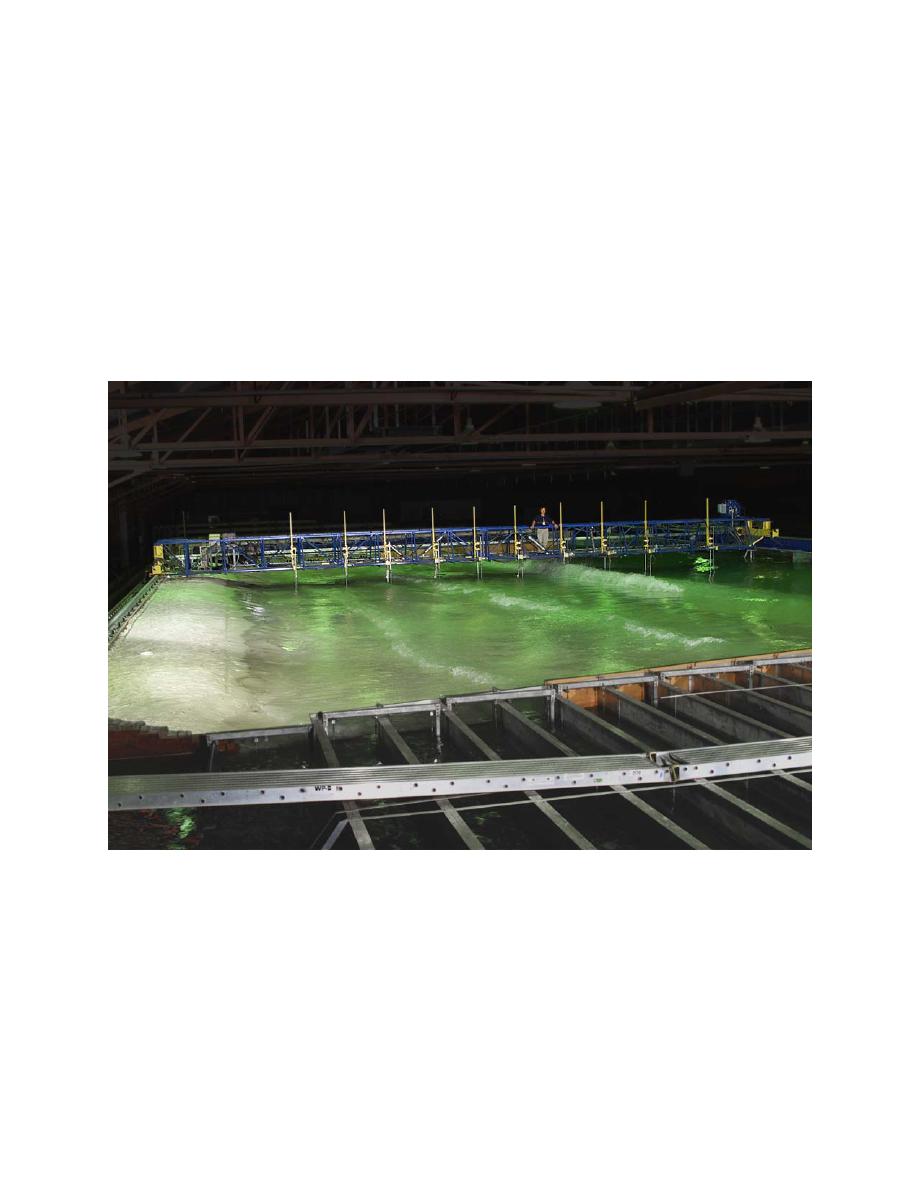
PHYSICAL MODEL DESCRIPTION
Experiments were conducted in the Large-scale Sediment Transport Facility (LSTF) of the US
Army Engineer Research and Development Center's Coastal and Hydraulics Laboratory. The LSTF
is a large-scale laboratory facility, 30-m wide, 50-m long, 1.4-m deep, and is capable of simulating
conditions comparable to low-energy coasts (Figure 1). The intent of the facility is to reproduce surf
zone processes found on a long, straight, natural beach in a finite-length basin, and improve existing
methods for calculating total longshore sediment transport rate and its cross-shore distribution.
Hamilton and Ebersole (2001) found the LSTF was capable of producing uniform and steady
hydrodynamic parameters that drive longshore sediment transport. The LSTF provides a controllable
environment for accurate measurements of longshore sediment transport rate and its cross-shore
distribution (Wang et al., 2002a).
Fig. 1. An experiment in the LSTF
Four wave generators are used to produce waves in the LSTF. Each generator has a board length
of 7.62 m and is synchronized with the other generators to produce 30.5-m long unidirectional long-
crested waves at an incident wave angle of 10 deg to shore normal. The wave makers can produce
maximum wave heights of 0.5 m.
The sand beach consists of approximately 150 m3 of fine quartz sand with d50, = 0.15 mm. The
beach was approximately 0.25-m thick, extended 27 m alongshore, 18 m offshore, and was
constructed to a trapezoidal planform shape to correspond to the incident wave approach. To
minimize longshore variation in waves and currents, it was necessary to maintain straight and
Smith et al
3



 Previous Page
Previous Page
